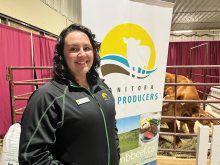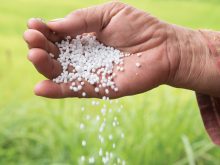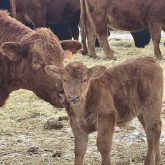The H1N1 virus has been detected in Manitoba hogs since late June, according to Dr. Wayne Lees, Manitoba’s chief provincial vet.
A “handful” of sow, nursery and feeder herds in barns located around the province have come down with the virus, which is believed to have been spread to them by their human handlers.
“It’s probably not useful to talk about numbers of farms, because I expect that we’ll see more of these cases down the road,” said Lees. “As this disease spreads into the human population, there will be more opportunities for people to carry it into the swine barns.”
Read Also

Mazergroup’s Bob Mazer dies
Mazergroup’s Bob Mazer, who helped grow his family’s company into a string of farm equipment dealerships and the main dealer for New Holland machinery in Saskatchewan and Manitoba, died July 6 from cancer.
Current rules adopted by hog farmers and their staff to prevent infecting their animals, such as staying home when sick with flu, wearing face masks and handwashing, still leave some leeway for humans to spread the pathogen to hogs.
In the early stages of H1N1 infection, human cases may be actively shedding the virus even though they have not progressed far enough to feel any symptoms, he said.
“It’s almost impossible to stop infections from spreading. ”
– DR. WAYNE LEES
“It’s almost impossible to stop infections from spreading. But we can certainly reduce the transmission and spreading,” said Lees.
Instead of slapping a quarantine on infected farms, the office of the chief veterinarian is working with the Canadian Food Inspect ion Agency (CFIA), the herd owners and their local vets to prevent further spread. That means that shipments of live animals have been voluntarily stopped or delayed.
News of the presence of H1N1 in Manitoba hogs first appeared on the www.promedmail.orgwebsite on Aug. 28 in the form of a report written by Lees in early August. Delays in reporting were due to problems in the submission process, he said.
In his submission to the websi te operated by the International Society for Infectious Diseases, Lees noted that the CFIA and the Council of Chief Veterinary Officers have agreed that farms that have been diagnosed with H1N1 do not require quarantine or eradication of the pigs, citing the lack of food safety risks, or evidence that animals play a significant role in the spread of virus to the general human population.
So far, symptoms of the disease in pigs in Manitoba seem to be very mild, with a nasal discharge and a slight cough and elevated temperature. No deaths were reported, and most of the animals recovered within four to seven days, he wrote.
The virus was seen to spread from sows to piglets, and from nurseries to feeder and finisher sites.
News of the recent outbreaks in Manitoba hog herds, comes some months after a widely publicized case in Alberta. That farm was under quarantine for many weeks, and eventually the herd was slaughtered by the owner for animal welfare reasons.
Other submissions to www.promedmail.orghave included cases of the H1N1 virus infecting turkeys on a breeder farm in Chile and a swine herd in Australia.
Last week, the ProMED website reported one suspected human case of H1N1 co-infection in Egypt, but it was later found to be seasonal influenza H3N2, not the “bird flu” virus, or H5N1.
Many fear that co-infection of birds, swine or humans with a highly pathogenic form such as H5N1 and the milder version H1N1 could result in a much more dangerous virus.
“There’s always a theoretical risk. But who knows if that will ever play out in reality,” said Lees.
Lees wouldn’t speculate whether officials in other countries might be underreporting infections in their swine herds for fear of sparking trade disruptions. But he did say that Canada’s policy of proactive disclosure of H1N1 is important for the purpose of tracking the disease over time and eventually finding a way to defeat it.
“I think it is in everybody’s best interests to identify these cases, especially in the beginning, until we get some sense of confidence in terms of how this particular virus will behave,” he said. “We know a lot more now even than we did in the first Alberta case.” [email protected]


















